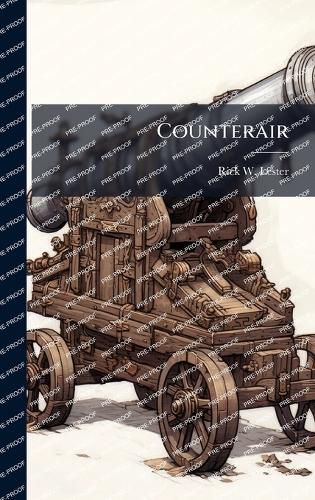Readings Newsletter
Become a Readings Member to make your shopping experience even easier.
Sign in or sign up for free!
You’re not far away from qualifying for FREE standard shipping within Australia
You’ve qualified for FREE standard shipping within Australia
The cart is loading…






This white paper examines the counterair mission in 2025--what it is, what the threats are, how we counter them. In the broadest sense, the counterair mission will not change in the next thirty years. The basic premise of air superiority--neutralizing or destroying an adversary's ability to control the skies--will remain intact. This paper examines the counterair mission by first performing an analysis of three different trajectories. The first is an evolutionary trajectory based on projections of current and programmed capability. The second and third trajectories represent extremes--"anything but" approaches for conducting the counterair mission. The second trajectory is "anything but" inhabited aircraft and the third is "anything but" aircraft at all--performing the counterair mission solely with surface and space-based systems. The results of this analysis will provide us with a basis of comparison for each. Common themes emerged from all three trajectories. The primary theme is a requirement for near-real-time collection, processing and distribution of information, or in some cases knowledge, to support the commander's assessment and reaction to a given situation. A comprehensive holographic display system is required to present the information to the commander.
This work has been selected by scholars as being culturally important, and is part of the knowledge base of civilization as we know it. This work was reproduced from the original artifact, and remains as true to the original work as possible. Therefore, you will see the original copyright references, library stamps (as most of these works have been housed in our most important libraries around the world), and other notations in the work.
This work is in the public domain in the United States of America, and possibly other nations. Within the United States, you may freely copy and distribute this work, as no entity (individual or corporate) has a copyright on the body of the work.
As a reproduction of a historical artifact, this work may contain missing or blurred pages, poor pictures, errant marks, etc. Scholars believe, and we concur, that this work is important enough to be preserved, reproduced, and made generally available to the public. We appreciate your support of the preservation process, and thank you for being an important part of keeping this knowledge alive and relevant.
$9.00 standard shipping within Australia
FREE standard shipping within Australia for orders over $100.00
Express & International shipping calculated at checkout
This white paper examines the counterair mission in 2025--what it is, what the threats are, how we counter them. In the broadest sense, the counterair mission will not change in the next thirty years. The basic premise of air superiority--neutralizing or destroying an adversary's ability to control the skies--will remain intact. This paper examines the counterair mission by first performing an analysis of three different trajectories. The first is an evolutionary trajectory based on projections of current and programmed capability. The second and third trajectories represent extremes--"anything but" approaches for conducting the counterair mission. The second trajectory is "anything but" inhabited aircraft and the third is "anything but" aircraft at all--performing the counterair mission solely with surface and space-based systems. The results of this analysis will provide us with a basis of comparison for each. Common themes emerged from all three trajectories. The primary theme is a requirement for near-real-time collection, processing and distribution of information, or in some cases knowledge, to support the commander's assessment and reaction to a given situation. A comprehensive holographic display system is required to present the information to the commander.
This work has been selected by scholars as being culturally important, and is part of the knowledge base of civilization as we know it. This work was reproduced from the original artifact, and remains as true to the original work as possible. Therefore, you will see the original copyright references, library stamps (as most of these works have been housed in our most important libraries around the world), and other notations in the work.
This work is in the public domain in the United States of America, and possibly other nations. Within the United States, you may freely copy and distribute this work, as no entity (individual or corporate) has a copyright on the body of the work.
As a reproduction of a historical artifact, this work may contain missing or blurred pages, poor pictures, errant marks, etc. Scholars believe, and we concur, that this work is important enough to be preserved, reproduced, and made generally available to the public. We appreciate your support of the preservation process, and thank you for being an important part of keeping this knowledge alive and relevant.